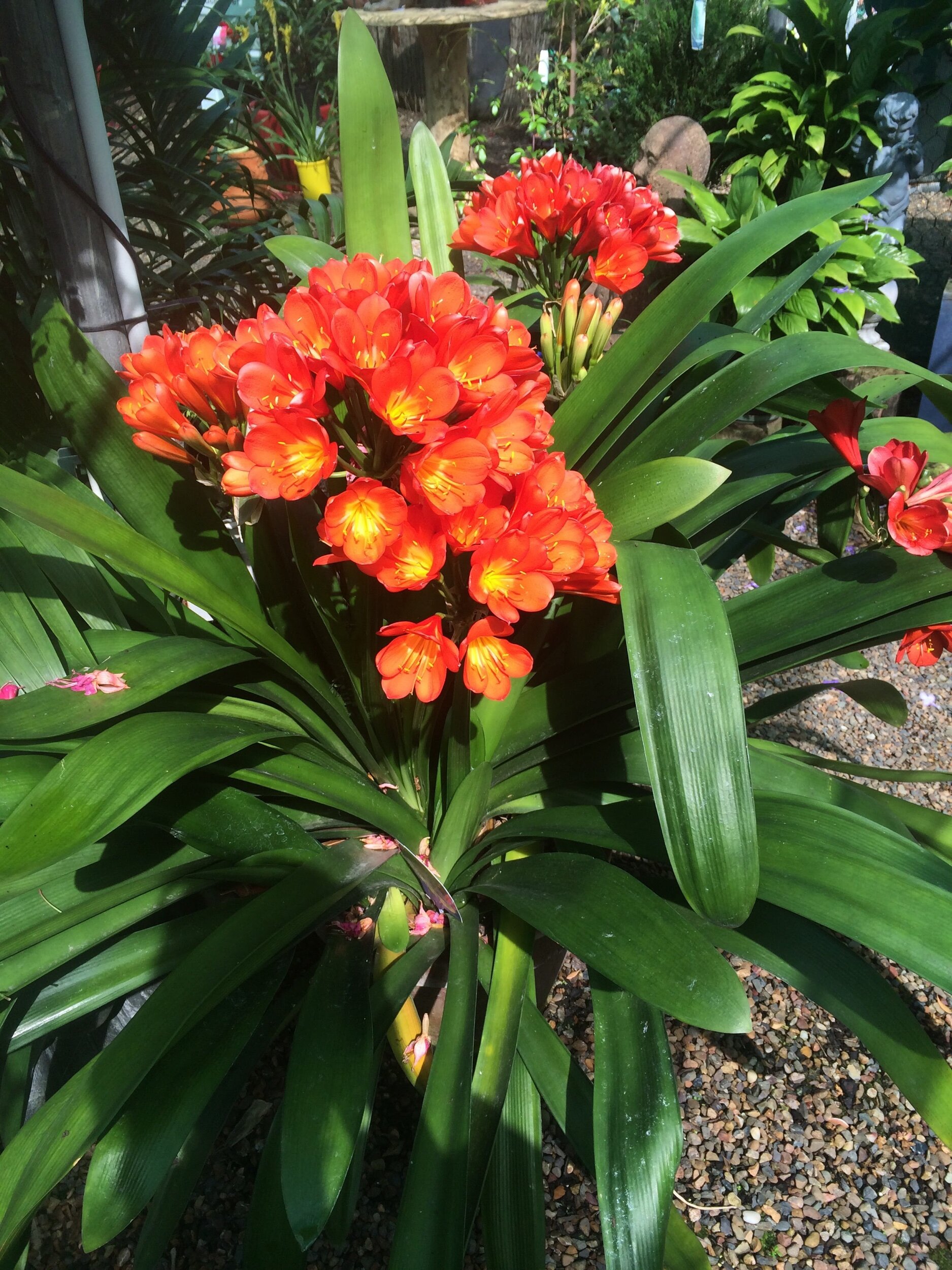Clivias, how can I not fall in love?
These beautiful evergreen plant has clusters of vibrant yellow throated, orange or salmon trumpet flowers. Sometimes with new breeding the flowers will have a combination of colours. The flowers are held on stalks above the clump of dark green strap-like leaves.
It is a beautiful shade plant, that can tolerate light sun. It is perfect for borders or mass planted under trees. It flowers August to November and over the years has become synonymous with the Toowoomba Carnival of Flowers.
They love to be pot bound and I find they flower better when they are in a good sized clump. In the past people have believed they are shy to flower. I was once told that they won’t flower unless they have at least 12 leaves all up (six on each side).
They can handle the cold and the heat and once established can handle periods of dry. I try to fertilise mine with Organic Link about every three months and liquid fertilise them with Triple Boost and Neem oil about every fortnight. They are an extremely hardy plant.
One insect that does love them and will cause mass devastation is Brithys crini. It’s larvae is commonly called Lily Caterpillar.
Young caterpillars skeletonise leaves while older caterpillars will attack the crown of the plant. In no time at all the plant can be destroyed.
The adult moth has a wingspan approximately 5cm across and lays eggs in clusters on susceptible plants. The caterpillar grows up to 5cm long and is a black and mottled grey colour. They have several distinctive yellow and/or white stripes running length ways down their body.
There are several generations a year with the most damage noticed during the warmer months. In home gardens it is better to rely on mechanical control (your hands!). Look for discoloured feeding patches on leaves and then crush the young larvae before they develop. For heavily infested leaves it often is better to cut out the leaves and destroy them (do not add to compost bays). If you need to spray I prefer using Dipel or Neem oil but make sure you drench the crown of the plant and the surrounding soil.
In high humidity mealy bugs can also cause problems with your Clivias but the regular application of Neem oil will also help solve this problem.
If you are wondering, the proper pronunciation should follow the plant’s namesake - Lady Clive. It should be pronounced with a long “i,” Klyveea (rhymes with “jive”).


